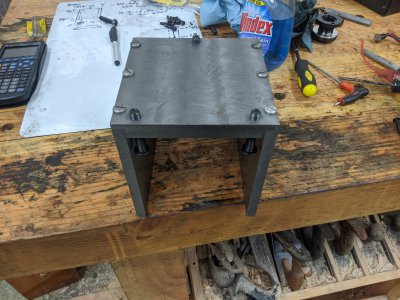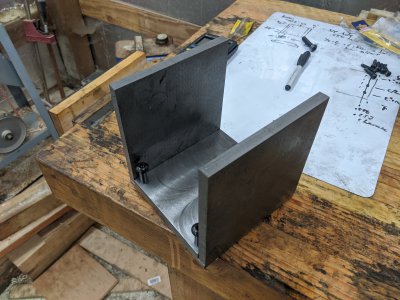Fast! Cheap! Accurate!

Also, I think, probably very much like what Erich is actually going to do. When it's upside down, he can use his micro-adjusters to get them right.
I have not yet picked apart every aspect of grinder wheel balancing. Yes indeed, if the majority bulk of the wheel is not at right angles to the shaft, you can imagine the wobble. Theoretically, it could still be "balanced" so far as non-vibration spinning in one plane is concerned, but even when the circumference is trued with a diamond, it is still scuffing axially on the surface. So fixing this either by tilted shimming, or using one of those adjustable arbors where you rotate two slant washers relative to each other to set it up true, I can believe those are expensive!
Non-uniform weight lumps within the wheel? This whole deal is exactly like balancing a car wheel, with the added refinement that we further don't allow a perfectly balanced disc that ends up with it's surfaces not much within the spatial confines of a mathematical geometric disc on axis.
I am not sure about "drilling" bits out of a disc is OK. Adding epoxy in special places seems less harmful. I still feel I am somewhat ignorant on this. I still have to read and explore more to get up to speed. Meantime, there are bound to be HM members who have been through this, and can say exactly what
not to do to a grinding wheel.






 Or perhaps a pair of machinist jacks could be pressed into service for that.
Or perhaps a pair of machinist jacks could be pressed into service for that.